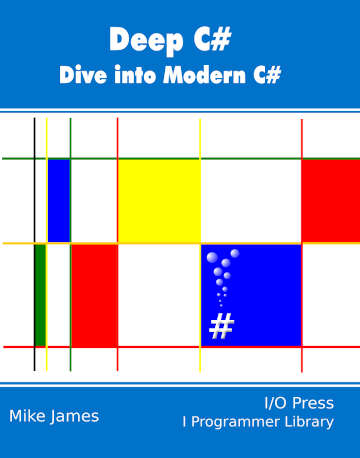| Deep C# - Custom Attributes In C# |
| Written by Mike James | |||||||
| Friday, 19 March 2021 | |||||||
Page 1 of 6 The role of custom attributes in C# can be confusing. They are easy to use when supplied, but how do you go about creating custom attributes? And when are they useful? This is a Chapter of our ebook on C# - a work in progress. Deep C#Buy Now From Amazon Chapter List
Extra Material <ASIN:1871962714> <ASIN:B09FTLPTP9> Attributes - they really don't seem to be necessary as part of a programming language. After all why "decorate" code with attributes when you can achieve the same results by more direct routes? In nearly all cases an attribute is an excuse for not implementing a property that does the same job. However attributes provide a useful extension to the standard language syntax and a way of adding features after the event and without having to extensively re-work the classes that that attributes are applied to. In other words, the classes that you apply attributes to don't necessarily need to know anything about the attributes you apply. In this sense attributes have been likened to "code patching" brought up-to-date. You can use an attribute to add a behaviour without modifying the core code and you can take this behavior away just as easily. C# has supported and usefully employed attributes for some time but there is still a great deal of confusion about when custom attributes might or might not be useful. Runtime MetadataIn .NET an attribute is an item of data associated with a programming construct that is stored in the assembly and which can be accessed by the use of reflection. Notice that some confusion is caused by the fact that some built-in attributes also additionally affect the way that the compiler seems to work. In the main this is not something that most attributes, and certainly not custom attributes, do. Essentially a custom attribute is a "code comment" that gets compiled into your code, as metadata, and which other code, including you own, can retrieve and possibly act on. This is the standard explanation of an attribute but the attribute mechanism is so much more.
Understanding how this mechanism works means that you can think about exactly how attributes might be useful and how things can go wrong. There is a sense in which an attribute can always be replaced by a property. For example, you might mark a class as using ASCII encoding for its text and hence implement an [ASCII] attribute. Any other class that make use of a class so marked would have to inspect it to discover that it was ASCII and then arrange to treat it correctly. It should be fairly obvious that an alternative is to use an ASCII property set to True or False to indicate the same information. Notice that the two approaches have some similarities and some differences:
So:
This seems to sum up the situation but notice that with such a flexible implementation you can always change the way things work. This is the standard and most appropriate way of working with attributes.
Implementing A Custom AttributeImplementing a custom attribute such as [ASCII], mentioned in the previous section, is fairly easy as long as you don’t read into it more than there is. All you have to do is create a class that inherits from Attribute:
It is usual to use a name of the form Xattribute and if you do the system will treat the names X and Xattribute as the same. Unfortunately if you do declare the class as Xattribute, e.g. ASCIIattribute, then IntelliSense prompts with the full name. Personally I’d rather keep attribute names short and meaningful so I prefer:
Now you can apply the attribute to any class as in:
Of course nothing happens if you do this, there is no default attribute behaviour worth worrying about, but it is legal syntax – now to give it some semantics. |
|||||||
| Last Updated ( Friday, 19 March 2021 ) |

